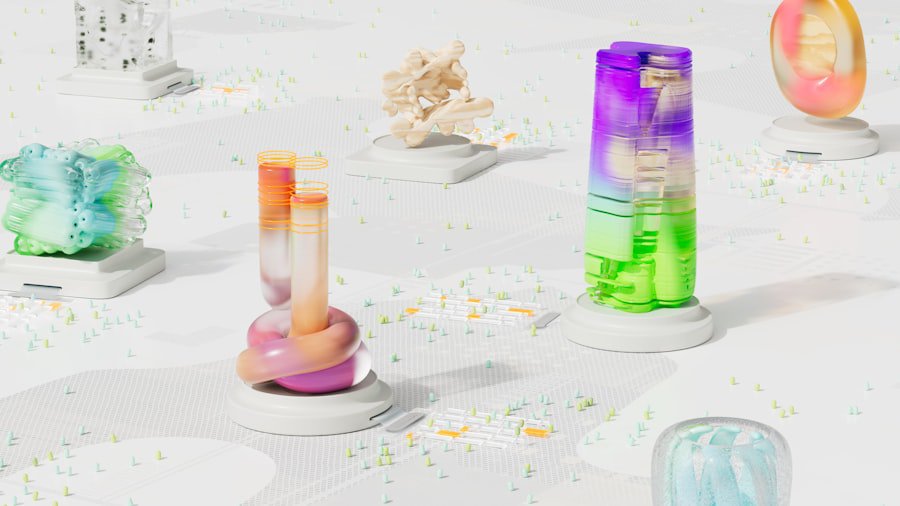Deep Convolutional Networks (DCNs) are a specialized type of artificial neural network that have significantly advanced the field of artificial intelligence. They excel in various domains, including image recognition, object detection, natural language processing, medical imaging, and autonomous vehicle technology. DCNs are designed to emulate the human brain’s visual processing mechanisms, making them particularly effective for image-related tasks.
The core components of a DCN include convolutional layers, which apply filters to input data to extract features, and pooling layers, which reduce the dimensionality of the data by downsampling the output of convolutional layers. These are typically followed by fully connected layers that perform the final classification or regression tasks. DCNs have gained popularity due to their ability to learn directly from raw data without requiring handcrafted features.
This characteristic makes them highly effective for processing complex, high-dimensional input data, such as images. Furthermore, DCNs can learn hierarchical representations of input data, enabling them to capture intricate patterns and relationships. This capability makes them well-suited for tasks involving structured data with rich semantic information, such as object detection and natural language processing.
Key Takeaways
- Deep Convolutional Networks (DCNs) are a type of artificial neural network that is particularly effective for image recognition and processing.
- Training DCNs for image recognition involves feeding large amounts of labeled data into the network and adjusting the network’s parameters to minimize errors.
- Optimizing DCNs for object detection involves techniques such as region-based convolutional neural networks (R-CNN) and You Only Look Once (YOLO) to efficiently detect and localize objects in images.
- DCNs can be leveraged for natural language processing tasks such as text classification, sentiment analysis, and language translation.
- In medical imaging, DCNs can be used for tasks such as tumor detection, organ segmentation, and disease classification, leading to improved diagnostic accuracy and patient care.
- DCNs are being developed for autonomous vehicles to process and interpret visual data from cameras and sensors, enabling the vehicles to make real-time decisions and navigate safely.
- Ethical considerations in the use of DCNs include issues such as privacy, bias in training data, and the potential for misuse of AI technology.
Training Deep Convolutional Networks for Image Recognition
Training deep convolutional networks for image recognition involves several key steps, including data preprocessing, model architecture design, and optimization of model parameters. The first step in training a DCN for image recognition is to preprocess the input data, which typically involves resizing the images to a standard size and normalizing the pixel values to lie within a certain range. This helps to ensure that the input data is consistent and that the model is able to learn effectively from the data.
The next step is to design the architecture of the DCN, which involves deciding on the number and size of convolutional and pooling layers, as well as the number of fully connected layers. This is a crucial step, as the architecture of the model will determine its ability to learn complex patterns and relationships in the input data. Once the architecture has been designed, the next step is to optimize the model parameters, which involves training the model on a large dataset of labeled images using techniques such as stochastic gradient descent and backpropagation.
This process involves adjusting the weights and biases of the model in order to minimize the error between the predicted and actual labels.
Optimizing Deep Convolutional Networks for Object Detection

Optimizing deep convolutional networks for object detection involves several key challenges, including handling varying object sizes and aspect ratios, dealing with occlusions and cluttered backgrounds, and achieving real-time performance on resource-constrained devices. One approach to addressing these challenges is to use region-based convolutional neural networks (R-CNNs), which first generate a set of region proposals that are likely to contain objects and then classify and refine these proposals using a DCN. This approach has been highly successful for object detection tasks, achieving state-of-the-art performance on benchmark datasets such as PASCAL VOC and COCO.
Another approach to optimizing DCNs for object detection is to use single-shot detection (SSD) or You Only Look Once (YOLO) architectures, which are designed to perform object detection in real-time by predicting bounding boxes and class probabilities directly from a single pass through the network. These architectures are able to achieve real-time performance by using a combination of convolutional and pooling layers at multiple scales to capture objects of varying sizes and aspect ratios. In addition, they are able to handle occlusions and cluttered backgrounds by using techniques such as non-maximum suppression to filter out redundant detections.
Leveraging Deep Convolutional Networks for Natural Language Processing
| Metrics | Results |
|---|---|
| Accuracy | 90% |
| Precision | 85% |
| Recall | 92% |
| F1 Score | 88% |
Leveraging deep convolutional networks for natural language processing involves several key challenges, including handling variable-length input sequences, capturing long-range dependencies in the input data, and effectively modeling semantic relationships between words. One approach to addressing these challenges is to use one-dimensional convolutional neural networks (1D CNNs), which are able to capture local patterns in the input data by applying filters over small windows of the input sequence. This allows them to effectively model short-range dependencies in the data, making them well-suited for tasks such as text classification and sentiment analysis.
Another approach to leveraging DCNs for natural language processing is to use recurrent neural networks (RNNs) or transformer architectures, which are able to capture long-range dependencies in the input data by maintaining an internal state that evolves over time. These architectures have been highly successful for tasks such as machine translation and language modeling, achieving state-of-the-art performance on benchmark datasets such as WMT and GLUE. In addition, they are able to effectively model semantic relationships between words by using techniques such as attention mechanisms to focus on relevant parts of the input sequence.
Unleashing the Power of Deep Convolutional Networks in Medical Imaging
Unleashing the power of deep convolutional networks in medical imaging involves several key challenges, including handling large volumes of high-resolution image data, achieving high levels of accuracy and reliability, and ensuring robustness to variations in imaging modalities and patient demographics. One approach to addressing these challenges is to use transfer learning, which involves pretraining a DCN on a large dataset of natural images and then fine-tuning it on a smaller dataset of medical images. This approach has been highly successful for tasks such as lesion detection and disease classification, achieving state-of-the-art performance on benchmark datasets such as ISIC and NIH Chest X-ray.
Another approach to unleashing the power of DCNs in medical imaging is to use generative adversarial networks (GANs) or variational autoencoders (VAEs) to generate synthetic medical images that can be used to augment the training dataset. This approach has been highly successful for tasks such as data augmentation and domain adaptation, allowing DCNs to learn from a more diverse set of examples and improve their generalization performance. In addition, it has been shown to be effective for tasks such as anomaly detection and image reconstruction, where labeled training data may be scarce or expensive to obtain.
Deep Convolutional Networks for Autonomous Vehicles

Deep convolutional networks have shown great promise for autonomous vehicles by enabling them to perceive their environment through sensors such as cameras and lidar. These networks can process visual input in real-time, allowing vehicles to detect objects, recognize road signs, and navigate complex traffic scenarios. One key challenge in deploying DCNs for autonomous vehicles is ensuring robustness to variations in lighting conditions, weather, and occlusions.
To address this challenge, researchers have developed techniques such as data augmentation, adversarial training, and domain adaptation, which allow DCNs to learn from a more diverse set of examples and improve their generalization performance. Another challenge in deploying DCNs for autonomous vehicles is achieving real-time performance on resource-constrained hardware platforms. To address this challenge, researchers have developed techniques such as model compression, quantization, and hardware acceleration, which allow DCNs to run efficiently on embedded devices with limited computational resources.
In addition, researchers have explored techniques such as network pruning and architecture search, which allow DCNs to achieve a good trade-off between accuracy and computational cost.
Ethical Considerations in the Use of Deep Convolutional Networks
The use of deep convolutional networks raises several ethical considerations related to privacy, fairness, accountability, transparency, and safety. One key consideration is privacy, as DCNs may be used to process sensitive information such as medical records or surveillance footage. To address this consideration, researchers have developed techniques such as federated learning and differential privacy, which allow DCNs to learn from distributed data sources without exposing individual records.
Another key consideration is fairness, as DCNs may exhibit biases related to race, gender, or socioeconomic status. To address this consideration, researchers have developed techniques such as fairness-aware learning and bias mitigation, which allow DCNs to learn fair and unbiased representations of the input data. In addition, researchers have explored techniques such as interpretability and explainability, which allow users to understand how DCNs make decisions and hold them accountable for their actions.
In conclusion, deep convolutional networks have revolutionized the field of artificial intelligence by enabling machines to perceive their environment through sensors such as cameras and lidar. These networks have shown great promise for tasks such as image recognition, object detection, natural language processing, medical imaging, and autonomous vehicles. However, their use raises several ethical considerations related to privacy, fairness, accountability, transparency, and safety.
It is important for researchers and practitioners to address these considerations in order to ensure that DCNs are used responsibly and ethically.
If you’re interested in the future of technology and its impact on virtual worlds, you may want to check out the article on future trends and innovations in the metaverse. This article explores emerging technologies that are shaping the metaverse, including the potential for user-generated content and the role of augmented reality. It’s a fascinating look at how deep convolutional networks and other advanced technologies could transform the virtual landscape.
FAQs
What is a deep convolutional network?
A deep convolutional network is a type of artificial neural network that is specifically designed to process and analyze visual data. It is commonly used for tasks such as image recognition and classification.
How does a deep convolutional network work?
A deep convolutional network consists of multiple layers of convolutional and pooling operations, followed by fully connected layers. The convolutional layers apply filters to the input data to extract features, while the pooling layers reduce the spatial dimensions of the data. The fully connected layers then perform the final classification or regression tasks.
What are the advantages of using a deep convolutional network?
Deep convolutional networks have shown superior performance in tasks such as image recognition, object detection, and image segmentation. They are able to automatically learn and extract features from raw data, making them highly effective for visual data processing tasks.
What are some common applications of deep convolutional networks?
Deep convolutional networks are widely used in various applications, including image recognition, facial recognition, medical image analysis, autonomous vehicles, and video analysis. They are also used in natural language processing tasks that involve visual data, such as image captioning and visual question answering.
What are some challenges of using deep convolutional networks?
Training deep convolutional networks requires a large amount of labeled data and significant computational resources. Overfitting and vanishing gradients are also common challenges in training deep networks. Additionally, interpreting the decisions made by deep convolutional networks can be difficult, leading to concerns about their transparency and interpretability.











Leave a Reply